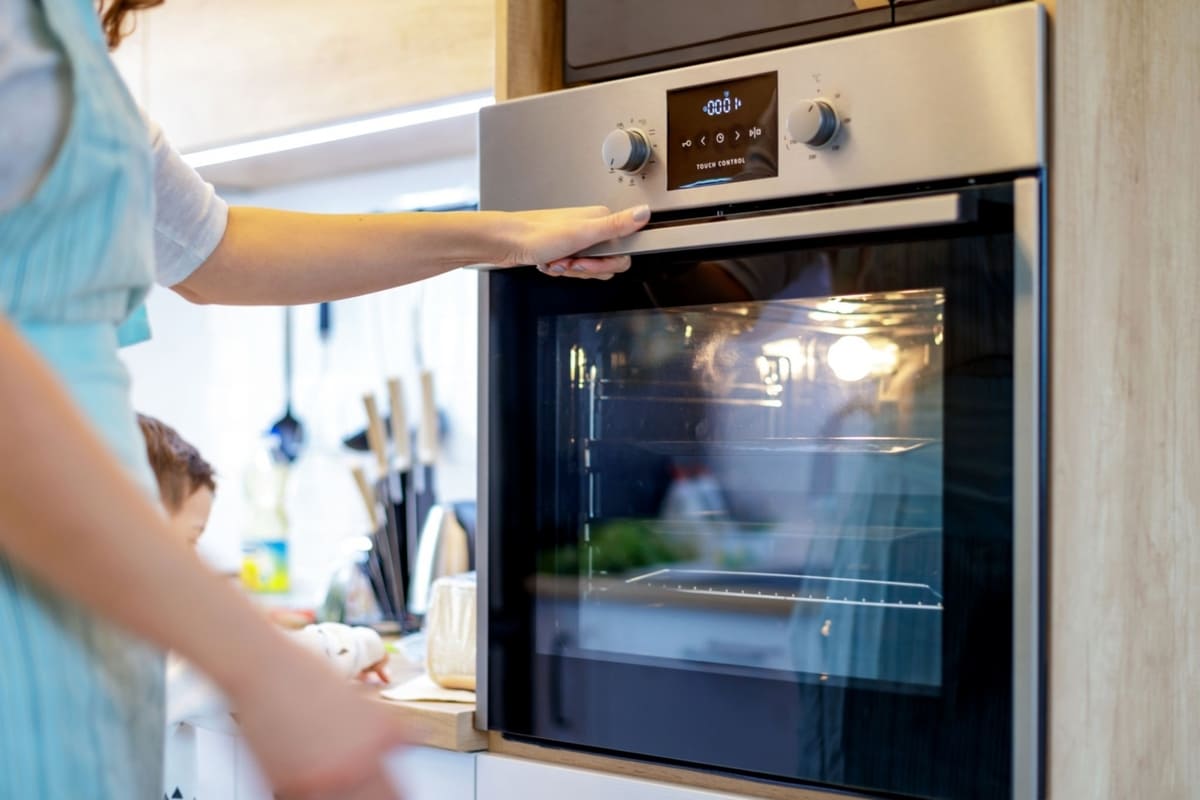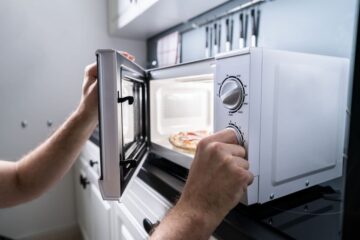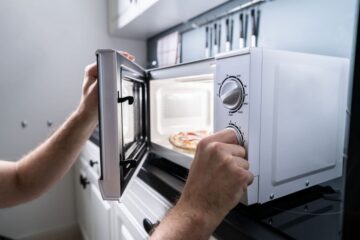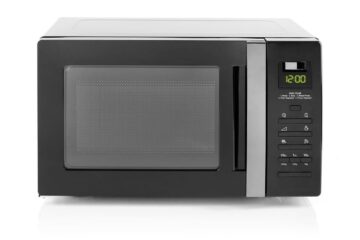When it comes to cooking, finding the right materials to use in the oven is crucial. Pyrex is a popular choice due to its durability and versatility. However, with so many different types of Pyrex available, it can be challenging to know which ones can withstand high temperatures. In this article, we will answer the question, “Can Pyrex go in a 450-degree oven?” and provide you with a comprehensive guide to using Pyrex in high-temperature cooking.
Understanding Pyrex
To understand whether Pyrex can go in a 450-degree oven, it’s essential to understand what Pyrex is and how it’s made.
The history of Pyrex and its evolution
Pyrex has been around for over 100 years and has evolved over time. Originally, Pyrex was made from borosilicate glass, which was known for its durability and ability to withstand extreme temperatures. However, in 1998, the manufacturer of Pyrex changed the material to tempered soda-lime glass. This change resulted in Pyrex being more affordable but also made it more susceptible to thermal shock.
The material used in making Pyrex
Pyrex is made from a type of glass that is resistant to thermal shock. This means that it can withstand sudden changes in temperature without cracking or breaking. The glass is also non-porous, which makes it easy to clean and prevents odors and stains from being absorbed.
Different types of Pyrex and their uses
There are several different types of Pyrex available, including baking dishes, measuring cups, and storage containers. Each type of Pyrex is designed for a specific purpose, and some can withstand higher temperatures than others. It’s essential to check the manufacturer’s instructions before using Pyrex in high-temperature cooking.
Maximum Temperature for Pyrex
Knowing the maximum temperature that Pyrex can withstand is crucial to avoid damaging or breaking the glass.
The significance of knowing Pyrex’s maximum temperature
If Pyrex is exposed to temperatures higher than its maximum temperature, it can crack, break, or shatter. This can be dangerous and cause injury.
Factors affecting Pyrex’s maximum temperature
Several factors can affect Pyrex’s maximum temperature, including the type of Pyrex, its age, and its condition. It’s essential to inspect Pyrex regularly for chips, cracks, or scratches, as these can weaken the glass and make it more susceptible to breaking.
Pyrex’s maximum temperature according to the manufacturer’s instructions
The maximum temperature that Pyrex can withstand varies depending on the type of Pyrex. Most Pyrex baking dishes are safe to use in a 450-degree oven, but it’s essential to check the manufacturer’s instructions before use.
Pyrex and High-Temperature Cooking
Cooking at high temperatures can be challenging for some materials, including Pyrex.
The relationship between high-temperature cooking and Pyrex
Cooking at high temperatures can cause Pyrex to expand and contract rapidly, which can cause it to crack or break.
Can Pyrex withstand high temperatures?
Pyrex can withstand high temperatures, but it’s essential to check the manufacturer’s instructions before use. Using Pyrex at temperatures higher than its maximum temperature can cause it to crack, break, or shatter.
The impact of high temperatures on Pyrex’s durability
Exposure to high temperatures can also cause Pyrex to degrade over time, making it more susceptible to breaking. It’s essential to inspect Pyrex regularly for signs of wear and tear.
Can Pyrex Go In A 450 Degree Oven?
Yes, Pyrex can go in a 450-degree oven. However, it’s important to follow the manufacturer’s guidelines and take precautions to avoid sudden temperature changes that could cause the dish to shatter.
The Safety of Using Pyrex in a 450 Degree Oven
Using Pyrex in a 450-degree oven can be safe, but it’s essential to take precautions to avoid injury or damage to the cookware. According to Pyrex’s manufacturer, the maximum temperature for Pyrex is 450 degrees Fahrenheit or 232 degrees Celsius. It is crucial to follow this guideline to ensure safety and prevent accidents.
However, it’s important to note that sudden temperature changes can cause Pyrex to shatter. This can occur if Pyrex is taken from the freezer or refrigerator and placed directly into a hot oven or if it’s placed on a cold surface after being taken out of the oven. Therefore, it’s recommended to let Pyrex reach room temperature before placing it in a hot oven or on a cold surface.
Another risk of using Pyrex in high-temperature cooking is the possibility of warping or cracking. Pyrex is made of glass, which can expand and contract with changes in temperature. If it’s subjected to extreme temperature changes, the glass can warp or crack. To avoid this, it’s best to preheat the oven before placing the Pyrex dish inside, and to avoid sudden temperature changes.
It’s also important to use oven mitts or pot holders when handling hot Pyrex dishes, as they can retain heat for an extended period after being removed from the oven.
Overall, using Pyrex in a 450-degree oven can be safe, but it’s essential to take proper precautions to prevent accidents and damage to the cookware.
Alternatives to Pyrex in a 450 Degree Oven
While Pyrex is a popular choice for high-temperature cooking, there are alternative materials that can withstand similar temperatures. Some of these materials include ceramic, stoneware, and cast iron.
Ceramic and stoneware dishes are similar to Pyrex in that they are made of clay and are oven-safe. They can withstand high temperatures, making them suitable for baking, roasting, and broiling. However, they are more prone to cracking or chipping than Pyrex.
Cast iron cookware is another alternative to Pyrex. It’s known for its durability and ability to withstand high temperatures, making it ideal for cooking in the oven or on the stovetop. However, it’s heavier than Pyrex and requires proper seasoning and maintenance to prevent rusting.
When considering alternative materials to Pyrex, it’s essential to weigh the pros and cons of each option and choose the one that best suits your needs and cooking style.
How to Use Pyrex in a 450 Degree Oven?
Proper use and care of Pyrex can extend its lifespan and prevent damage or accidents. Here are some tips for using Pyrex in a 450-degree oven:
- Preheat the oven: Always preheat the oven before placing Pyrex in it. This helps ensure even cooking and prevents sudden temperature changes that can cause Pyrex to shatter or crack.
- Avoid sudden temperature changes: Do not subject Pyrex to sudden temperature changes, such as placing it in a hot oven from the freezer or refrigerator. Allow it to reach room temperature before placing it in the oven, and avoid placing hot Pyrex on a cold surface.
- Use oven mitts or pot holders: Always use oven mitts or pot holders when handling hot Pyrex dishes. They can retain heat for an extended period after being removed from the oven.
- Do not use on stovetop or broiler: Pyrex is not suitable for use on the stovetop or broiler. It’s designed for use in the oven only.
- Do not use on direct flame: Pyrex should not be placed on a direct flame, such as a gas stove burner.
By following these tips, you can safely use Pyrex in a 450-degree oven and prevent accidents and damage to the cookware.
Common Mistakes When Using Pyrex in a 450 Degree Oven
While Py rex is a durable material that can withstand high temperatures, there are still common mistakes that people make when using Pyrex in a 450-degree oven. Here are some of the most common mistakes and how to avoid them:
- Placing Pyrex directly on a hot surface: One of the most common mistakes is placing Pyrex directly on a hot surface, such as a stovetop or countertop. This can cause the Pyrex to crack or shatter due to thermal shock. To avoid this, always place Pyrex on a rack or trivet before placing it in the oven.
- Preheating Pyrex: Another common mistake is preheating Pyrex in the oven. While it may be tempting to preheat your Pyrex dish along with the oven, this can cause thermal shock and lead to cracking or shattering. Instead, let your Pyrex dish come to room temperature before placing it in the oven.
- Using damaged Pyrex: Using Pyrex that is chipped, cracked, or otherwise damaged can lead to breakage during high-temperature cooking. Always inspect your Pyrex before using it and replace it if it’s damaged.
- Abrupt temperature changes: Rapid temperature changes can cause Pyrex to crack or shatter. Avoid transferring your Pyrex dish from a hot oven directly to a cold surface, such as a countertop or sink. Instead, let it cool down gradually or place it on a trivet.
- Overfilling Pyrex: Overfilling Pyrex can cause it to spill over and create a mess in your oven. Additionally, if the Pyrex dish is too full, it may not cook evenly. Be sure to follow the manufacturer’s instructions for filling your Pyrex dish and leave room for expansion.
To avoid these common mistakes, it’s important to use Pyrex carefully and follow the manufacturer’s instructions. With proper care, Pyrex can last for many years and be a reliable tool for high-temperature cooking.
How to Test Pyrex’s Maximum Temperature?
If you’re unsure of your Pyrex’s maximum temperature, you can test it to determine its limits. Here are some methods for testing Pyrex’s maximum temperature:
- Boiling water test: Fill your Pyrex dish with water and place it in the oven at a low temperature, such as 200 degrees Fahrenheit. Increase the temperature in increments of 50 degrees and check for any signs of damage or deformation.
- Ice water test: Fill your Pyrex dish with ice water and place it in the oven at a low temperature. Increase the temperature in increments of 50 degrees and check for any signs of damage or deformation.
- Thermal shock test: Place your Pyrex dish in the oven at a high temperature, such as 450 degrees Fahrenheit, and then immediately transfer it to a cold surface, such as a countertop or sink. Check for any signs of damage or deformation.
When testing Pyrex’s maximum temperature, it’s important to be cautious and take proper safety precautions. Wear oven mitts and eye protection, and be prepared to remove the Pyrex dish from the oven if it shows signs of damage.
The Impact of Pyrex on Food Quality
One concern some people have when using Pyrex in high-temperature cooking is whether it affects the quality of cooked food. Pyrex is an inert material, which means it doesn’t react with the food or affect its flavor. Additionally, Pyrex’s ability to distribute heat evenly can help ensure that food cooks evenly and thoroughly.
However, it’s important to note that Pyrex dishes can retain heat for longer periods than other materials. This means that if you remove a Pyrex dish from the oven and place it on a cool surface, such as a countertop, the food inside may continue to cook from the residual heat. This can cause overcooking or drying out of the food. To prevent this, it’s recommended to let the Pyrex dish cool down gradually by placing it on a trivet or hot pad before transferring it to a cooler surface.
Another factor to consider is the thickness of the Pyrex dish. Thicker dishes may take longer to heat up and cool down, which can affect the cooking time and temperature of the food. Thinner Pyrex dishes may heat up and cool down faster, which can result in faster cooking times and potentially uneven cooking.
Conclusion
Overall, Pyrex can be a reliable and safe material to use in high-temperature cooking, but it’s important to take precautions to prevent injury and consider the thickness of the dish and its impact on cooking times and temperatures. With proper care and use, Pyrex can help ensure consistent and high-quality results in your cooking.



